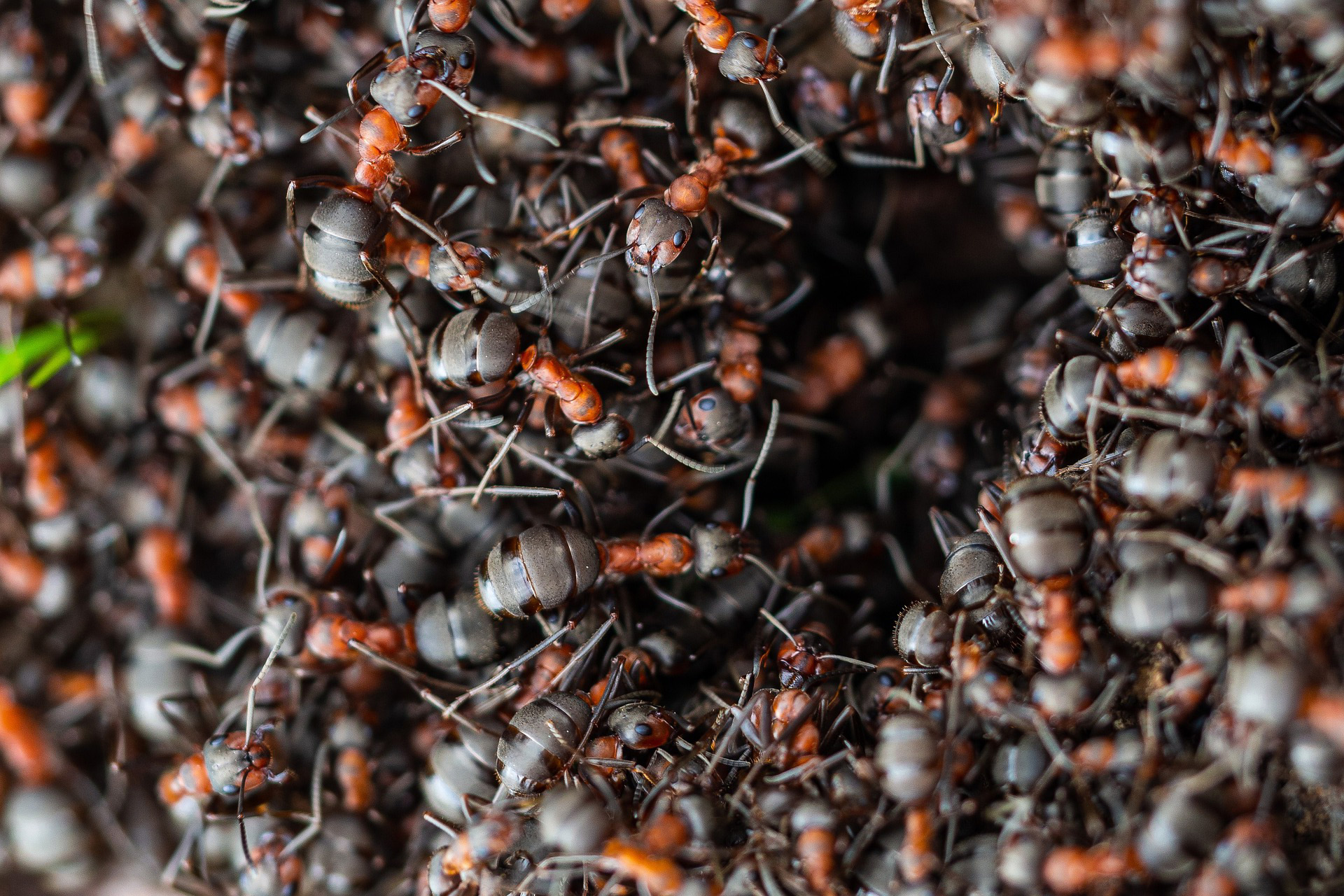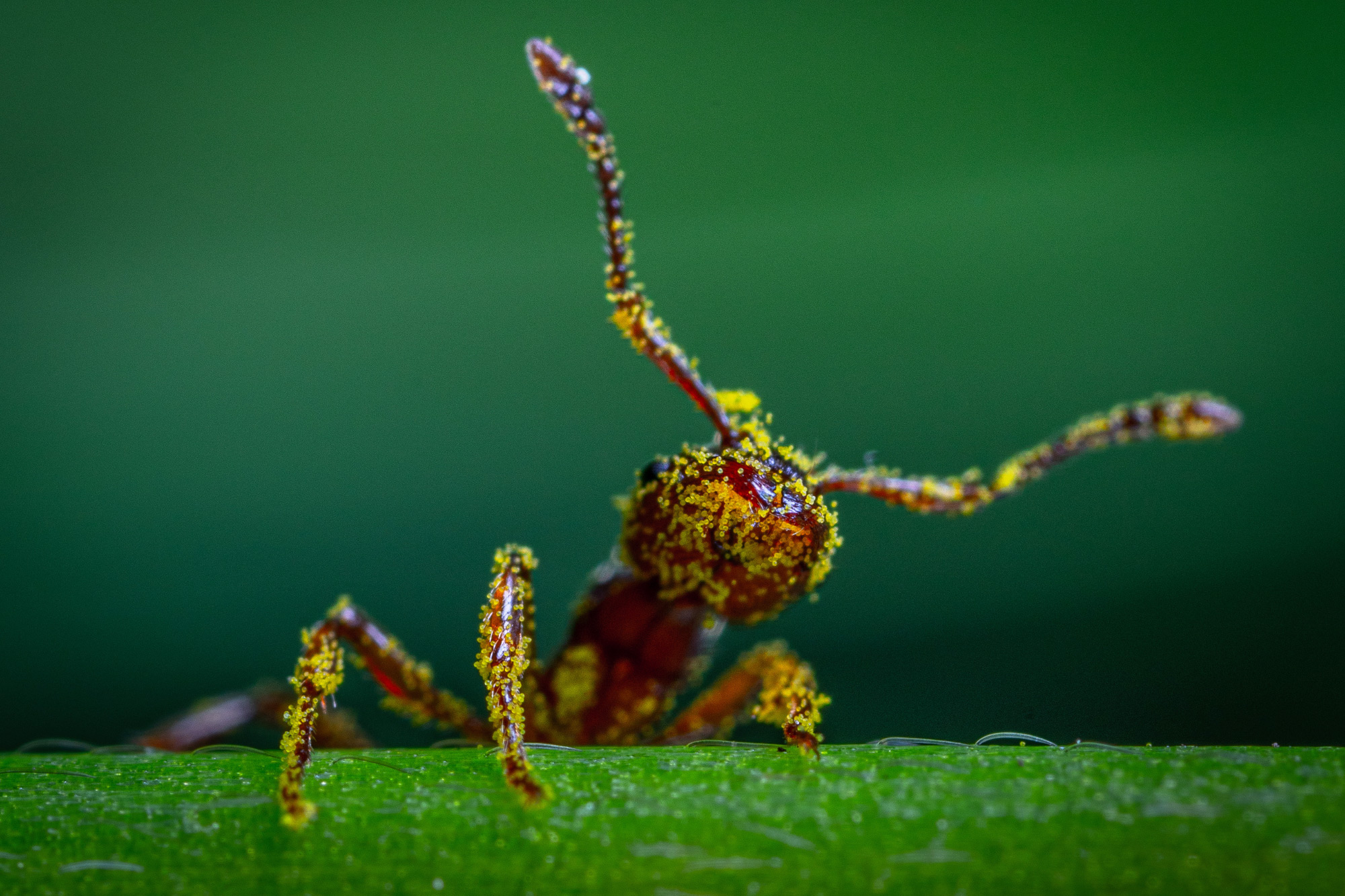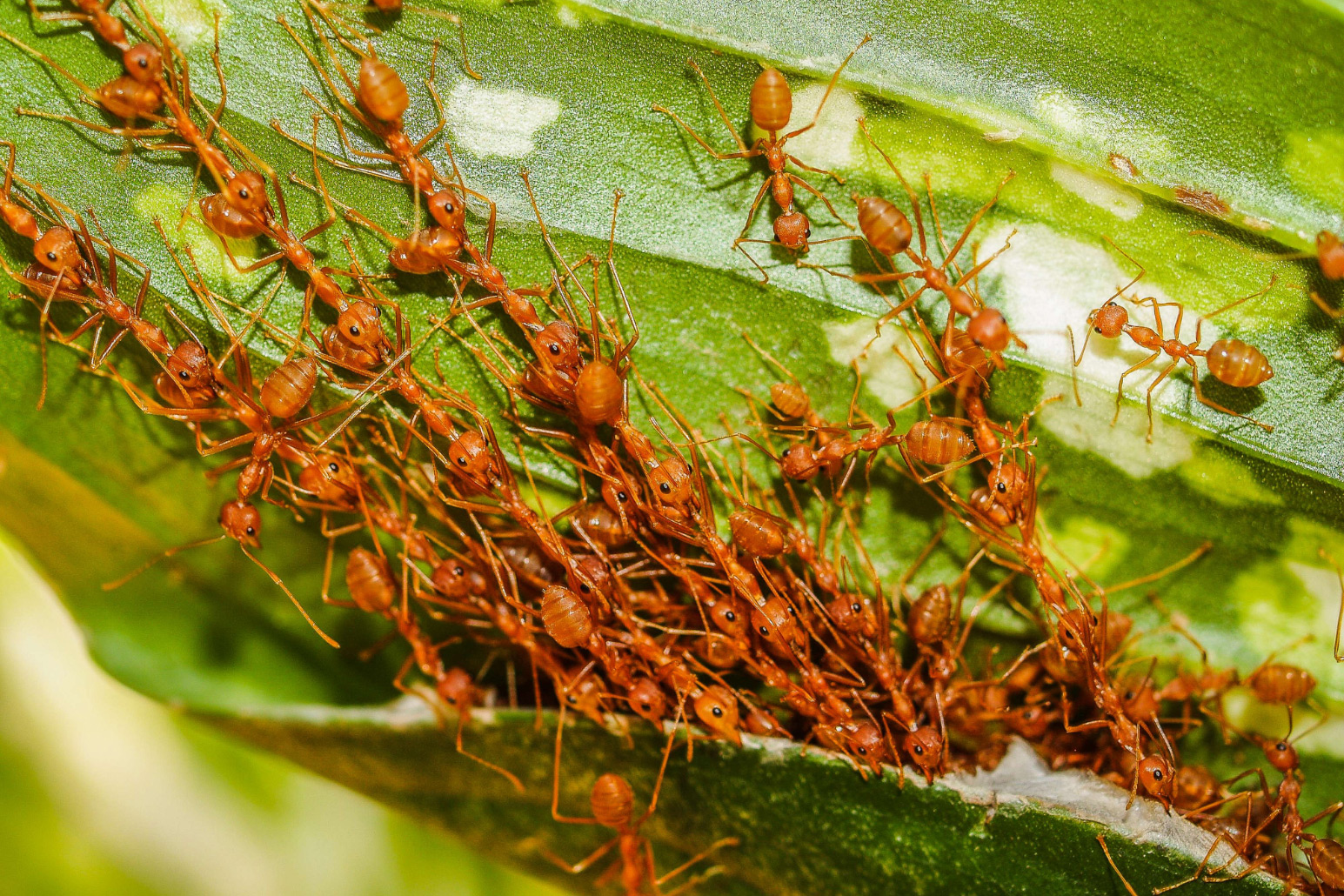- Biologists scoured hundreds of studies of ant populations around the globe to arrive at a startling new estimate of their numbers: 20 quadrillion, or about 2.5 million for every person on Earth.
- Even this estimate is low, the scientists say, as it does not account for ants living underground, and there is not much data from Northern Asia and Central Africa.
- Because ants are vital to the health of our ecosystems, researchers stress the importance of learning more about their abundance and their response to environmental change.
Whether a source of curiosity or annoyance, ants are central to life on Earth. Their microscopic world may seem foreign to us, but without them our world would be just as unrecognizable. Now, a recent study in the Proceedings of the National Academy of Sciences (PNAS) estimates just how many ants are all around us: a staggering 20 quadrillion (20,000,000,000,000,000), about 2.5 million ants for every human.
This unimaginable number is a conservative estimate, said the researchers, as they could not yet account for subterranean ants or compile enough data from Northern Asia and Central Africa. Still, the study has made nature lovers — including the study authors — regard the insects in a new light.
“I think we quickly overlook what’s beneath our feet,” said insect ecologist and co-lead author Sabine Nooten at the University of Würzburg in Germany. Nooten and her co-lead author, ecologist Patrick Schultheiss, conducted the work while at the University of Hong Kong.

Ants are one of the most successful organisms on the planet. Since their emergence more than 140 million years ago, they have managed to ingrain themselves in nearly every facet of life on Earth. The key to their success lies in their sophisticated social structures. Well-run colonies work instinctively and efficiently. They aerate soil, transport seeds underground, and are a vital food source for many organisms.
At 12 metric megatons of dry carbon, the total biomass of ants exceeds that of all wild birds and mammals combined. That’s twice the weight of the Great Pyramid of Khufu in Egypt – and more than one-fifth the weight of the Great Wall of China.

The team found that ant abundance is uneven across the globe. Dense populations inhabit tropical forested areas and arid shrublands are highly active. There are more than 12,000 different species, each with unique adaptations. Strong and surprisingly tidy carpenter ants use their powerful jaws to shred wood for nesting material. Aptly named fire ants are tiny but highly aggressive, injecting harmful venom into their victims. Docile leaf cutter ants cultivate gardens of fungi, harvesting bounties of fresh leaves for fertilizer.
To assess this full range of species, the scientists began with an initial database, curated by senior author Benoit Guénard of the University of Hong Kong. The vast index contained nearly 9,000 studies on ants from the last 80 years. After exhausting this list, they turned to the Internet, searching for any studies involving ants over all continents and major biomes. But after careful analysis, the team pruned its list from nearly 20,000 studies to 489, because many of them lacked abundance data and used non-standard collection methods.

There are two standard ways to collect ants, said Nooten: pitfall traps and leaf litter sampling. With pitfalls, ants fall into buried traps while foraging or hunting. After a set time, scientists count them. Leaf litter sampling works on a larger scale: Any ants within one square meter of surface leaf litter or humus are extracted and counted.
By extrapolating from these studies to similar settings around the globe, the scientists arrived at their gigantic total. The figure of 20 quadrillion is two to 20 times higher than previously thought — and it’s enough to create a single chain of ants that wraps around Earth’s equator nearly 8 million times.
Still, the figure is very likely to increase, said Schultheiss, now at the University of Würzburg. For instance, subterranean ants alone could add another 2 quadrillion to 20 quadrillion. And beyond their sheer numbers, scientists are still assessing the many roles ants play in our ecosystems. “We realize they’re important, we just don’t know how important,” Schultheiss said.

Other scientists took note of the massive analysis — and its impact on the general public. “I think any study that clearly points out where gaps in knowledge are should inspire students, scientists, and folks who love ants to head out into the woods to see what’s there,” said Nate Sanders, an ecologist at the University of Michigan who was not involved with the team.
“Counting ants is not a difficult exercise,” said Guénard in a statement. “Citizens from all over the world, with the right methodology, could be involved in providing a more profound understanding of the changes that are happening over time and space.”
Citation:
Schultheiss, P., Nooten, S.S., Wang, R., Wong, M.K.L., Brassard, F., Guénard, B. (2022). The abundance, biomass, and distribution of ants on Earth. Proceedings of the National Academy of Sciences, 119 (40) e2201550119. https://doi.org/10.1073/pnas.2201550119.
Shannon Banks (@SbanksOwl) is a graduate student in the Science Communication Program at the University of California, Santa Cruz. Other Mongabay stories produced by UCSC students can be found here.